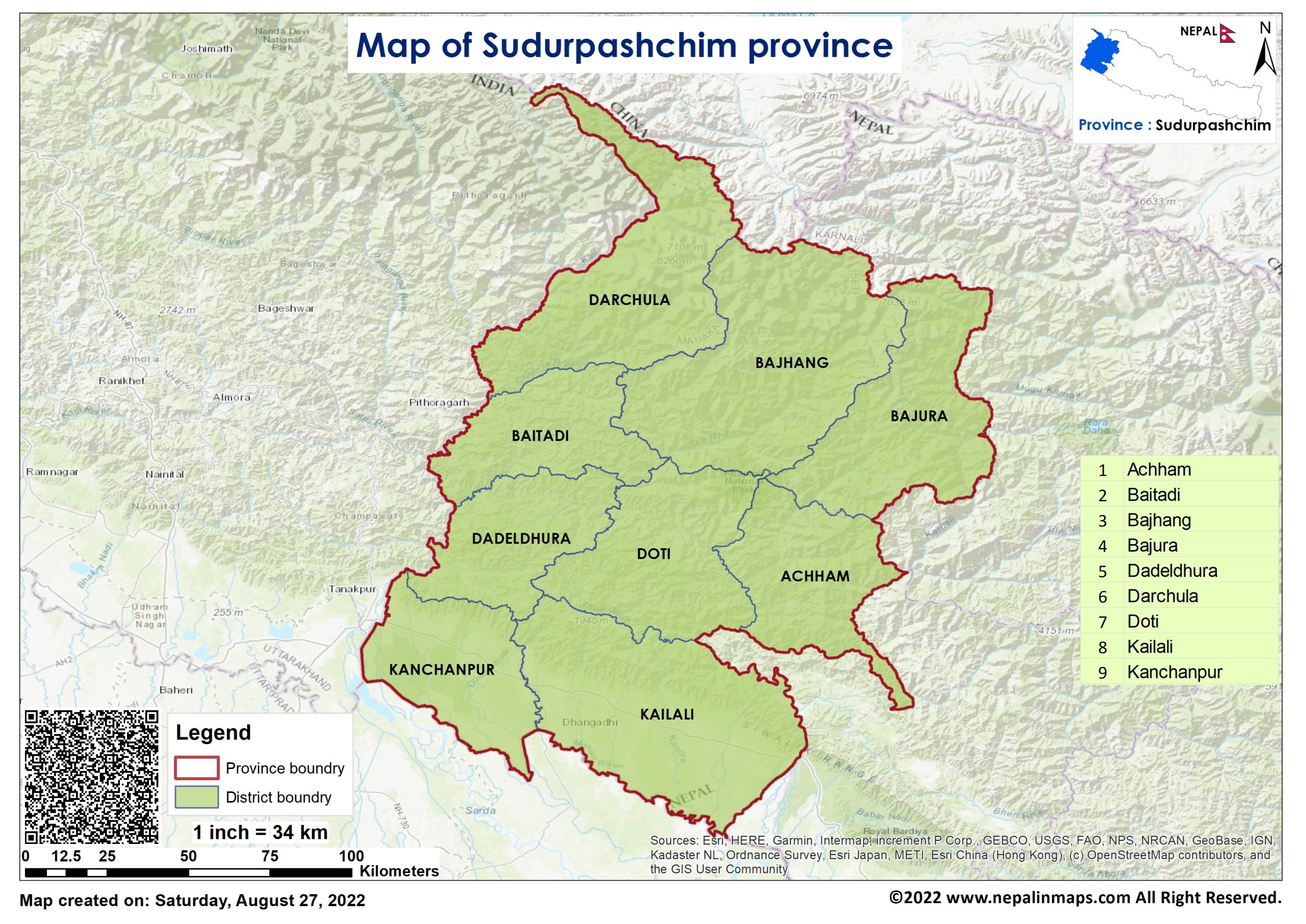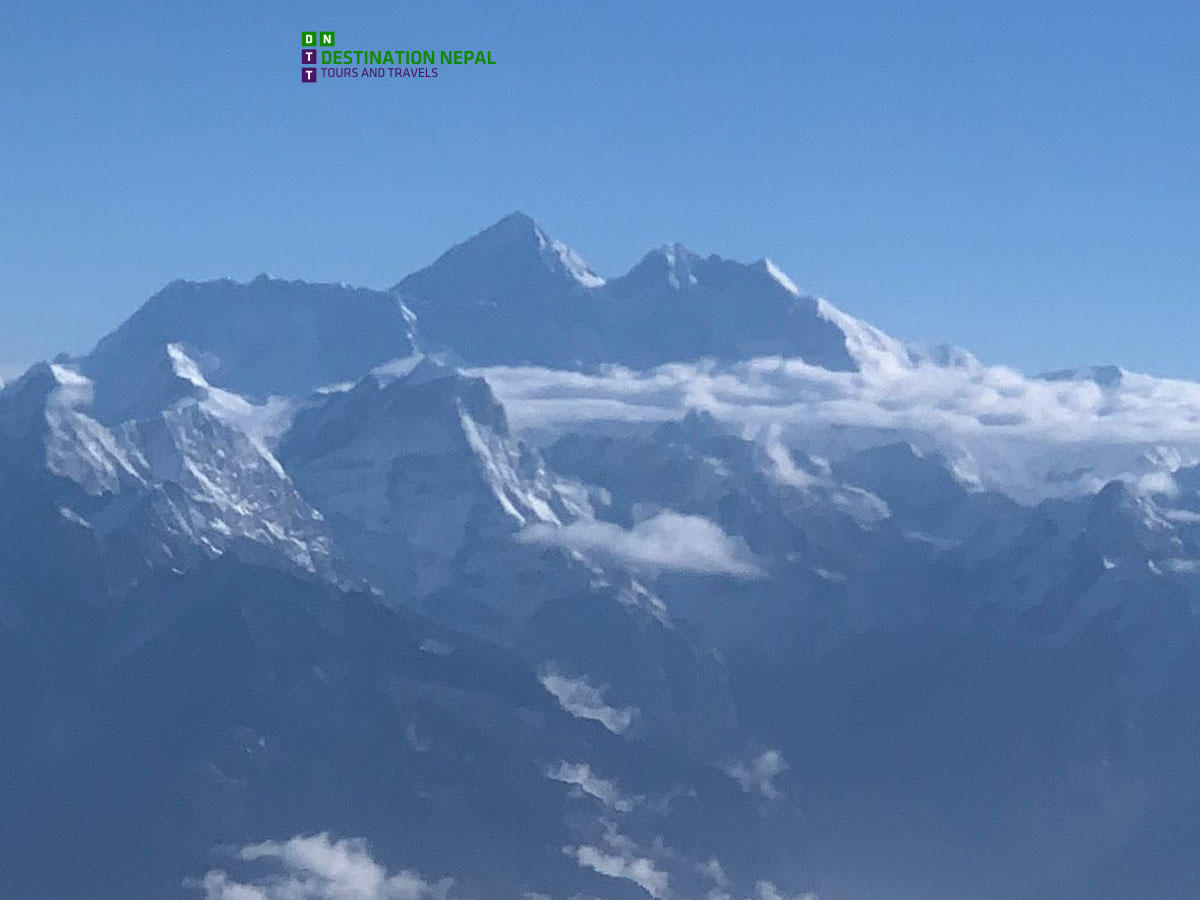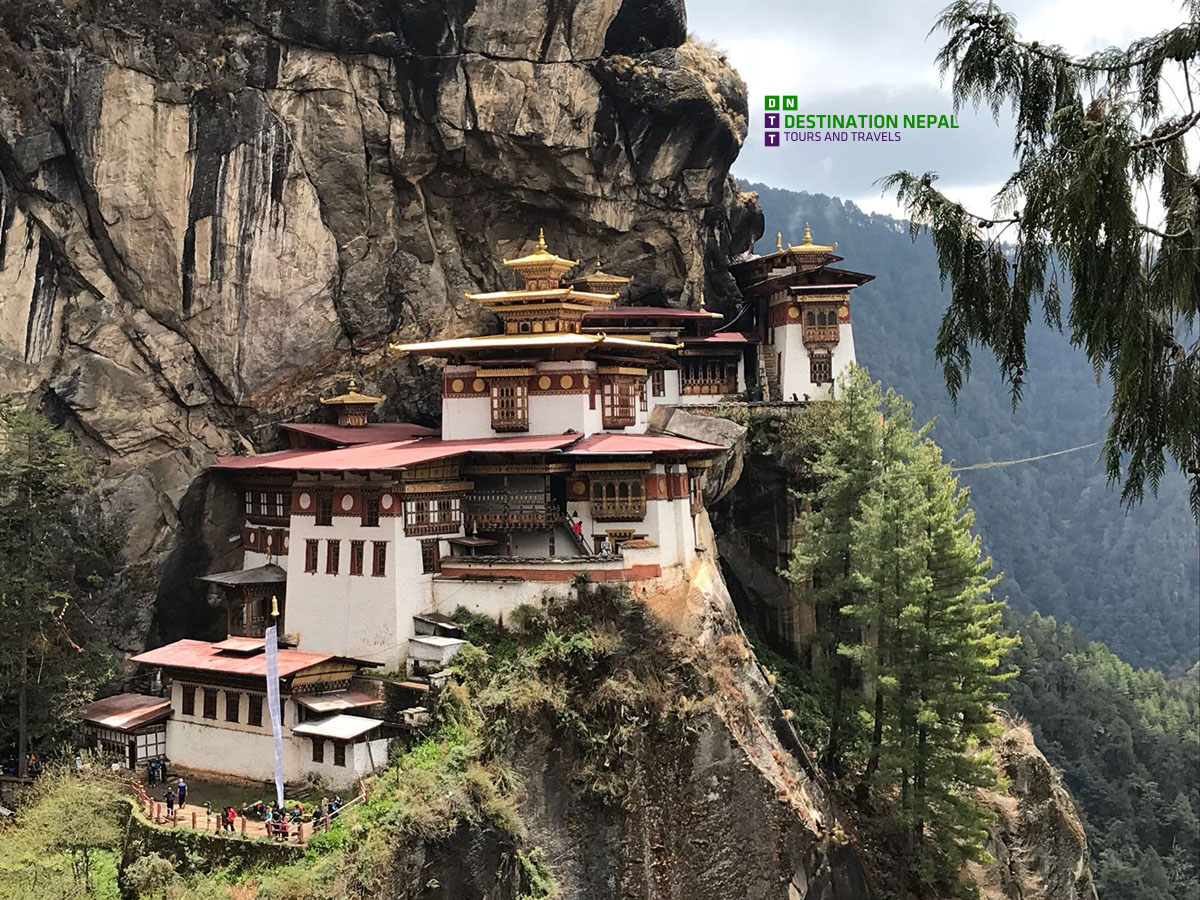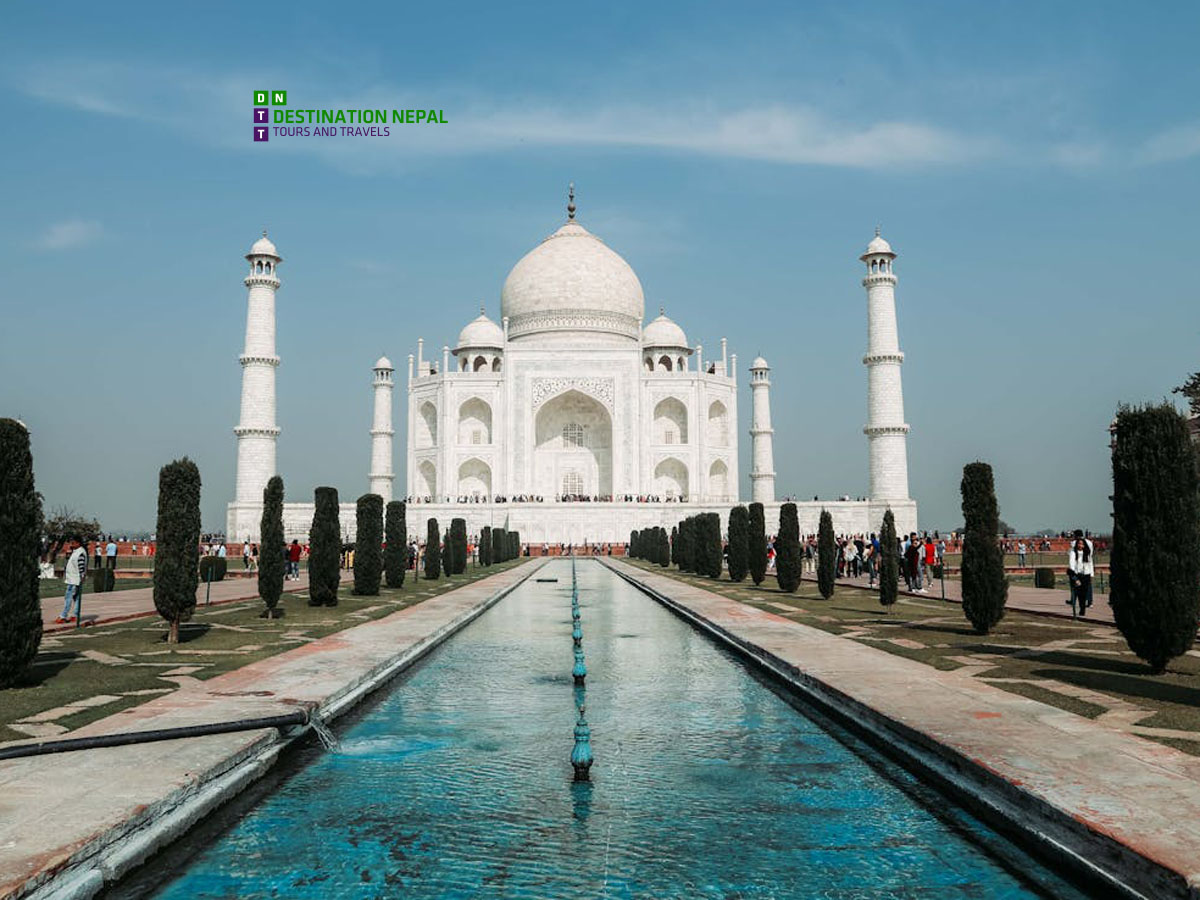Places to visit in Sudurpashchim Province

Sudurpashchim Province
Sudurpashchim Province is one of the seven provinces in Nepal, located in the western part of the country. It was formed after the adoption of the new constitution of Nepal in 2015 and covers an area of 19,539 square kilometers. The province is divided into nine districts: Achham, Baitadi, Bajhang, Bajura, Dadeldhura, Darchula, Doti, Kailali, and Kanchanpur.
The province has a diverse geography, ranging from the Himalayan Mountains in the north to the Terai plains in the south. The Karnali River, one of the major rivers of Nepal, flows through the province. The majority of the population in the province are Hindus, although there are also significant populations of Buddhists and Muslims.
Agriculture is the primary economic activity in the province, with crops such as rice, maize, wheat, and vegetables being grown. The province also has a significant number of small and medium-sized industries, particularly in the areas of manufacturing and handicrafts. The tourism industry is also growing in the province, with attractions such as the Shuklaphanta Wildlife Reserve and the Khaptad National Park drawing visitors from both within and outside Nepal.
1. Khaptad National Park
Khaptad National Park, located in the far-western region of Nepal, is a serene and diverse protected area known for its rolling hills, lush forests, and rich biodiversity. It is a spiritual site with cultural significance, home to Khaptad Baba's Ashram, and offers visitors breathtaking views, rare wildlife, and peaceful trekking trails.
Shuklaphanta National Park, located west of Ghodaghodi Lake in the Sudurpaschim region, is known for its vast grasslands and diverse wildlife, including swamp deer, elephants, tigers, and gharials. Once a royal hunting ground in the 70s, it is now a protected area that attracts researchers and is home to the indigenous Rana Tharu community. The park is also a haven for migratory birds, making it one of the most picturesque national parks in Nepal.
3. Ghodaghodi Lake
Ghodaghodi Lake, the largest in Sudurpaschim province, is a peaceful haven ideal for birdwatchers, boasting around 140 bird species, including the crested serpent eagle and grey-headed eagle. Surrounded by 13 smaller lakes and ponds, this area also offers sightings of wildlife like otters, gharials, and even Bengal tigers for the fortunate visitor.
4. Ramaroshan area
Located in Achham district, this underrated gem in Sudurpaschim province features 12 lakes and 18 meadows, creating a stunning landscape. Visitors can enjoy views of Saipal and Api mountains and the Budhiganga River basin, while the tall cliffs are famously used by locals for honey harvesting.
5. Badimalika
Badimalika, a sacred site in Sudurpaschim Province, offers a captivating landscape that changes with the seasons—from lush green in spring and monsoon to golden brown in autumn and snow-covered beauty in winter. This scenic destination, surrounded by lakes, is perfect for trekkers seeking a unique experience.
6. Api Nampa Conservation Area
Api Nampa Conservation Area, Nepal's youngest and most pristine, is a trekker's crown jewel, located in the untouched northwest. The valley between Mount Api and Mount Nampa features lush meadows, oak trees, and coniferous forests, with wildlife like snow leopards and the nomadic Byash community. Autumn is the best time to visit this scenic region in Sudurpaschim Province.
7. Mount Saipal
Mount Saipal in Sudurpaschim is a hidden gem for adventurous climbers and trekkers, offering a challenging and raw trekking experience. The route passes through Bajhang district's dense forests and local settlements, with camping under starry skies on empty trails. The best time to visit is mid-October to late November, when fields are cleared post-harvest, but trekkers must be self-sufficient as there are no lodging facilities.
8. Surma Sarovar
Surma Sarovar, a hidden gem in the Sudurpaschim region of Nepal, sits at an altitude of 4,300 meters and offers a challenging trek. The trail passes high ridges, small lakes, and meadows with views of peaks like Jethi Bahurani. Considered a sacred site, Surma Sarovar is an alternative to Tibet's holy Mansarovar Lake.
9. Budhinanda Tal
An isolated lake trek in Sudurpaschim, Nepal, is a challenging 13-day journey across steep cliffs and rugged hills, perfect for seasoned adventurers. This tough trail demands both physical and mental strength, so it's essential to go with a local guide. The best time to visit is during Janai Purnima or in autumn for breathtaking views and a safer experience.
10. Ugratara Temple
Ugratara Temple, a renowned religious site and tourist attraction in Nepal's far western province, is located about four kilometers west of Dadeldhura in Amargadhi Municipality-7. As one of the nine revered Bhagwati temples in the region, it holds significant cultural and spiritual importance.
11. Shaileshwari Temple
Shaileshwari Temple, located in Silgadhi, Doti, is one of the most revered shrines in Nepal's mid-western and far-western hills. Mentioned in the Skanda Purana, the temple complex features deities such as Shiva Lingam, Chaturbhuj Narayan, Ganesh, Bhairab, and Masta, with special pujas held during the Dashain festival.
12. Garva Durbar
Garva Durbar, built in 1927 by Khadga Shumsher Jung Bahadur Rana, is a historic three-story palace located on 13 ropanis of land. Used by the Ranas as a resting place during travels between the plains and hills, the palace features 83 windows and 53 doors, showcasing impressive architecture.
13. Malikarjun Temple
Malikarjun Temple, located 46 km from Khalanga in Malikarjun VDC, is a significant religious site in Darchula District, dedicated to Lord Shiva and Goddess Parvati. Devotees visit during Ashadh and Kartik months, especially for the Gaura Festival, and the temple is known for its sacred pilgrimage journey that ends at this revered location.
14. Nateshwori Temple
Nateshwori Temple, located near Badimalika, is an important pilgrimage site in Nepal, dedicated to the elder sister of Malika Devi. Major festivals like Janai Purnima and Chaite Dashain attract devotees from Nepal and India. The temple’s rituals are performed by two sets of priests, the Thakuri and Bhramin Joshi, with daily rituals carried out in Thakuribada during non-festival days.
15. Baidyanath Dham
Baidyanath Dham, located in Achham District at the confluence of the Budhi Ganga and Saraswati rivers, is one of Nepal's four major Lord Shiva shrines. The site also features Ved Bidyashram, a school dedicated to teaching Ved, with government funding allocated for its upgrade. During Shivaratri, pilgrims from Nepal and India visit this sacred site.




